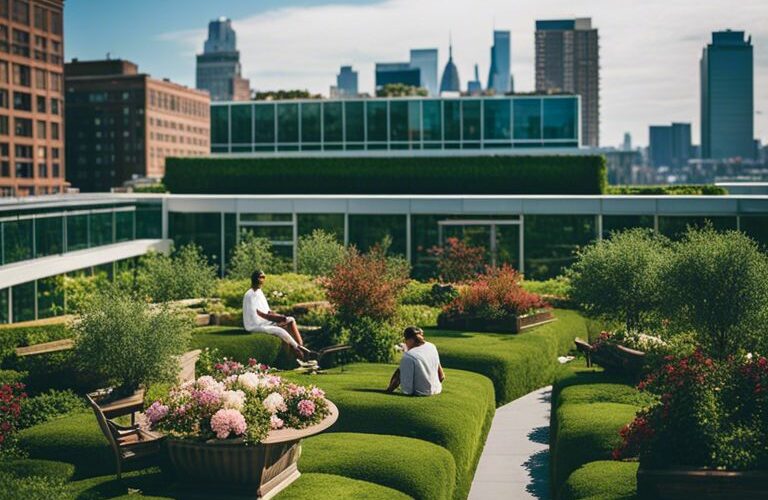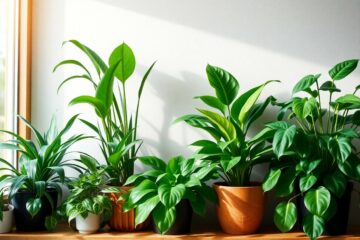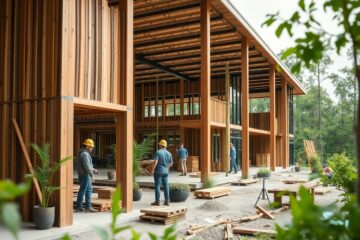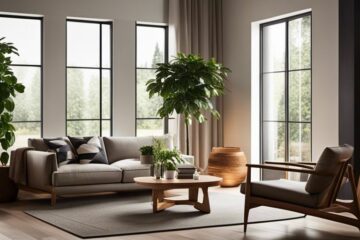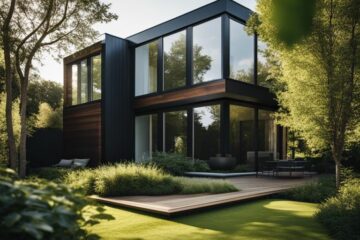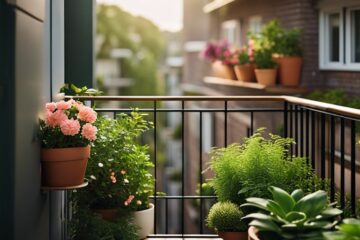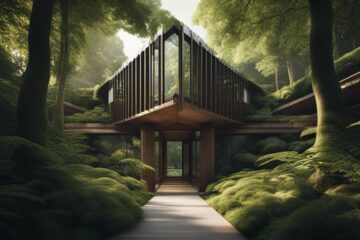Green roofs are a revolutionary concept that is transforming urban landscapes into sustainable oases. By incorporating vegetation on rooftops, cities can combat issues such as urban heat islands, air pollution, and stormwater runoff. The benefits of green roofs are vast, ranging from improved air quality and biodiversity to reduced energy consumption and extended roof lifespan. They not only provide insulation and cooling effects but also create beautiful green spaces in densely populated areas. However, the lack of awareness surrounding green roofs is a challenge that needs to be overcome for their widespread adoption. By understanding the importance of green roofs in creating healthier and more sustainable cities, we can work towards a greener future for urban environments.
Table of Contents
The Anatomy of a Green Roof
Layers and Components
A green roof is composed of several key layers and components that work together to create a sustainable and eco-friendly rooftop. The layers typically include a waterproofing membrane, a root barrier, a drainage layer, a growing medium, and finally, the vegetation layer. The waterproofing membrane is necessary to prevent water leakage into the building structure, while the root barrier protects the roof from damage.
The drainage layer ensures proper water flow and prevents waterlogging, which can cause structural issues. The growing medium provides nutrients for the plants and helps with water retention, while the vegetation layer consists of the plants and grasses that form the visible green surface of the roof, contributing to its environmental benefits.
Types of Green Roofs
There are several types of green roofs that vary in complexity and maintenance requirements. Extensive green roofs are lightweight, have shallow growing mediums, and require minimal maintenance. Intensive green roofs, on the other hand, are heavier and can support a wider variety of plants, including trees and shrubs, but require more upkeep.
Semi-intensive green roofs fall between extensive and intensive types, offering a balance of plant variety and maintenance needs. Understanding the differences between these types is crucial for implementing the most suitable green roof based on the specific requirements of the building and its surroundings. Perceiving the unique characteristics of each type is vital for the success and longevity of a green roof project.
| Extensive Green Roofs | Intensive Green Roofs |
| Lightweight | Supports a wide variety of plants |
| Shallow growing medium | Can include trees and shrubs |
| Minimal maintenance | Requires more upkeep |
| Suited for smaller structures | Ideal for larger buildings or spaces |
| Cost-effective | Higher installation and maintenance costs |
Benefits of Green Roofs
Environmental Impacts
Green roofs play a significant role in reducing the environmental footprint of urban areas. By introducing vegetation into typically concrete-dominated city landscapes, green roofs help mitigate the urban heat island effect by providing insulation and reducing the amount of heat absorbed and re-radiated by buildings. This not only lowers energy consumption for cooling but also decreases greenhouse gas emissions associated with air conditioning units. Additionally, green roofs capture and filter rainwater, reducing the strain on stormwater systems and improving water quality by removing pollutants as the water percolates through the green roof layers.
Furthermore, green roofs promote biodiversity in urban settings by providing habitats for birds, insects, and plants that may otherwise struggle to survive in a concrete jungle. They also absorb carbon dioxide and release oxygen, contributing to cleaner air quality and combating climate changepositive impact on the sustainability of urban areas.
Societal and Economical Advantages
Green roofs offer a variety of societal and economical advantages that make them a valuable addition to urban spaces. From a societal perspective, green roofs enhance the quality of life in cities by providing green spaces for recreation, relaxation, and social interaction. The presence of green roofs has been linked to improved mental health and reduced stress levels among urban residents. Economically, green roofs can extend the lifespan of a roof by protecting it from UV radiation, temperature fluctuations, and mechanical damage. This can lead to long-term cost savings for building owners by reducing the need for roof maintenance and repairs.
Moreover, the installation of green roofs can increase property values and attract tenants looking for sustainable and environmentally-friendly buildings. This can result in higher rental yields and faster occupancy rates for property developers and building owners. Overall, the societal and economical advantages of green roofs demonstrate their potential to transform urban spaces into more sustainable and liveable environments.
Implementation and Maintenance
Planning and Design Considerations
When implementing green roofs, careful planning and design considerations are vital. Factors such as building structure, weight capacity, drainage systems, and plant selection must be carefully assessed. Designing the green roof to complement the local climate and ecosystem will ensure its sustainability and effectiveness.
It is important to collaborate with architects, engineers, and landscape designers to create a cohesive plan that integrates the green roof seamlessly into the urban environment. By considering elements such as sun exposure, wind patterns, and access for maintenance, a successful green roof that enhances both the building and the surrounding area can be achieved.
Ongoing Care and Challenges
Once the green roof is in place, ongoing care is necessary to maintain its health and functionality. Regular monitoring of plant health, irrigation systems, and drainage is crucial to ensure the green roof remains sustainable. Challenges such as weed control, pests, and extreme weather conditions must be addressed promptly to prevent damage to the green roof.
Despite the challenges that may arise, the benefits of a well-maintained green roof are undeniable. From improved air quality, reduced energy costs, increased biodiversity, to extended roof lifespan, green roofs offer a host of advantages for urban environments.
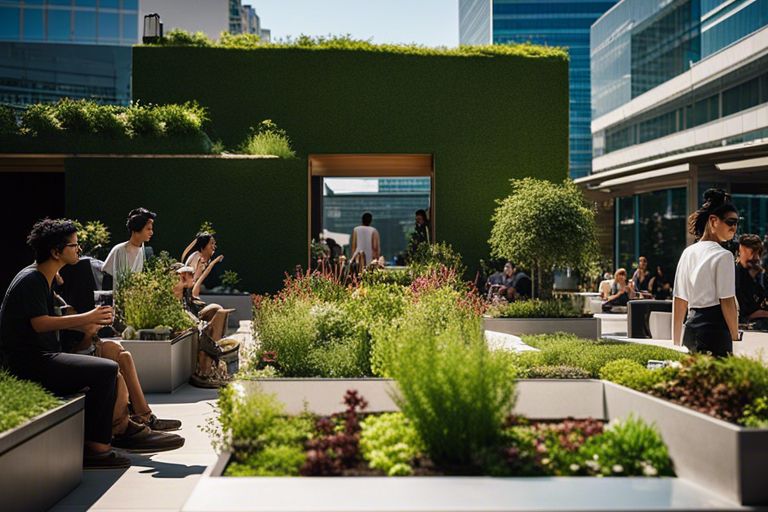
Future of Urban Greening
Urban greening is poised to play a pivotal role in creating sustainable and livable cities of the future. As urbanisation increases, the need for green spaces becomes more critical than ever. Green roofs offer a promising solution to transform concrete jungles into vibrant, eco-friendly environments that benefit both people and the planet.
Innovations in Green Roof Technology
The future of green roofs lies in cutting-edge technologies that enhance their efficiency and performance. Innovations such as modular green roof systems, advanced irrigation systems, and lightweight planting materials are revolutionising the way we design and implement green roofs. These innovations not only improve the environmental footprint of buildings but also contribute to biodiversity conservation and urban resilience.
One innovative technology gaining traction is the use of green roof monitoring systems that provide real-time data on roof performance, including water retention, energy savings, and plant health. Additionally, advancements in green roof insulation materials are increasing energy efficiency in buildings while reducing carbon emissions, making green roofs an attractive option for sustainable construction.
Policy and Community Engagement
Effective policies and community engagement are crucial for the widespread adoption of green roofs in urban areas. Governments and local authorities play a vital role in incentivising green roof installation through policy frameworks that promote green infrastructure and sustainable building practices. Furthermore, community engagement initiatives raise awareness about the benefits of green roofs and encourage citizen involvement in greening projects.
By collaborating with stakeholders and involving local communities in the planning and implementation of green roof projects, cities can foster a sense of ownership and pride in their green spaces. This approach not only enhances the visual appeal of urban areas but also creates resilient communities that are actively involved in creating a sustainable future for generations to come.
Green Roofs – Transforming Urban Spaces Into Sustainable Oases
Therefore, green roofs offer a transformative solution for urban spaces, turning concrete jungles into sustainable oases. By incorporating vegetation on rooftops, cities can reduce energy costs, manage stormwater runoff, improve air quality, and enhance biodiversity. The positive impact of green roofs on the environment and well-being of urban dwellers cannot be understated. Encouraging the implementation of green roofs in urban planning and architecture is crucial for creating healthier and more resilient cities. As we continue to grapple with the challenges of urbanisation and climate change, embracing green roofs is a step towards building a more sustainable future for our urban areas.
FAQ
Q: What are green roofs?
A: Green roofs are roofing systems that are partially or completely covered with vegetation and a growing medium, planted over a waterproofing membrane.
Q: How do green roofs benefit urban spaces?
A: Green roofs help to reduce urban heat island effect, improve air quality, provide habitat for wildlife, reduce stormwater runoff, and increase energy efficiency in buildings.
Q: What types of plants are suitable for green roofs?
A: Plants that are drought-resistant, low maintenance, and can thrive in shallow soil depth are typically suitable for green roofs. Succulents, sedums, and grasses are commonly used.
Q: What are the key considerations when installing a green roof?
A: Key considerations when installing a green roof include structural integrity of the building, weight load capacity, waterproofing, drainage, plant selection, maintenance access, and local climate conditions.
Q: Are there any financial incentives for installing green roofs?
A: Some local authorities offer financial incentives such as grants or tax credits for installing green roofs due to their positive impact on the environment and urban sustainability.

Our contributing author is a passionate advocate for eco-friendly living and sustainability. With a background in eco-life, they are dedicated to inspiring and empowering individuals to adopt environmentally conscious lifestyles. Through insightful articles, they share practical tips, innovative solutions, and thought-provoking perspectives to promote a greener, more sustainable world. Join them on the journey towards eco-smart living and discover how small choices can make a big impact. 🌱

